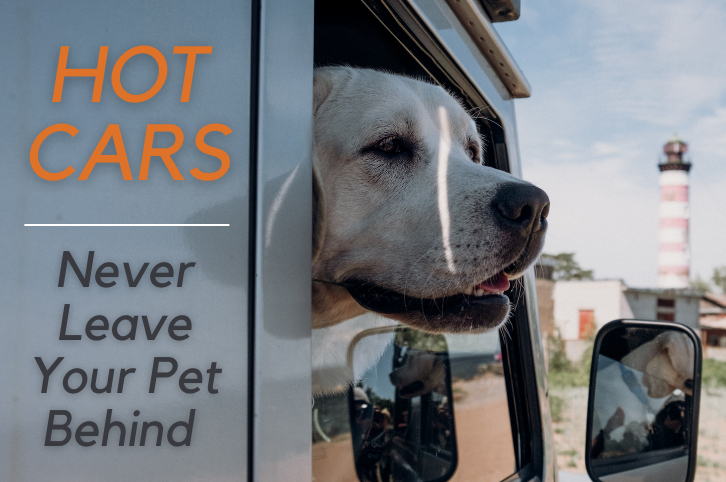Hot summer temperatures are extremely dangerous for our furry friends. If your pet frequently rides with you in the car, it can be tempting to roll down a window and leave your pet for just a moment while you run inside. You know you’ll be quick, so you think they’ll be ok. Wrong!
The temperature inside a parked car rises extremely fast, and leaving your pet behind can be deadly. At Homey Gnome Veterinary Clinic, we want to make sure your pet stays safe and cool this summer.
Here is what you need to know about hot cars and how to prevent heat stress in your pet.
Never Leave Your Pet Behind!
We all know that parked cars get hot. But did you know that temperatures can reach dangerous levels in just a matter of minutes? According to the ASPCA, in 85 °F weather, it only takes 10 minutes for the temperature in your car to exceed 100 °F!
Additionally, cracking your window a few inches does not prevent the car from overheating and does very little to provide appropriate ventilation. The best way to keep your pet safe is to understand the risks and never leave your pet behind.
The Dangers of Heat Stress
Heat stress is a serious medical condition that can be fatal if it is not properly treated. Cats and dogs can’t sweat like us, and panting is their primary method of temperature regulation. When the weather is hot, pets have a harder time cooling down and can quickly overheat.
Heat stress occurs when your pet’s internal body temperature exceeds 103 °F. If action is not taken quickly, their body temperature can continue to rise. Heatstroke occurs when your pet’s temperature reaches 106 °F. Unfortunately, temperatures this high can cause organ failure and even death.
Because of this, it’s critical to monitor your pet closely and be mindful of the summer heat. It’s best to limit your pet’s exposure to extreme temperatures and take the necessary precautions to keep your pet safe.
When evaluating your pet’s heat stress risk, it’s also important to be mindful of your pet’s health and any underlying medical conditions. Overweight pets and brachycephalic breeds have an increased risk of overheating and may need extra help to stay cool.
Know the Signs
While it’s critical to never leave your pet in a hot car, it’s also essential to know the signs of heat stress and how you can help your pet.
The most common signs of heat stress include:
- Excessive panting
- Difficulty breathing
- Lethargy or weakness
- Disorientation or stupor
If your pet’s condition progresses to heat stroke, they may experience more severe symptoms such as vomiting or diarrhea, seizures, and even collapse. As soon as you notice any signs of heat stress in your pet, it’s critical to move them to a cooler location immediately. Offer your pet some water and give us a call to determine if additional care is necessary.
Final Thoughts
At Homey Gnome Veterinary Clinic, your pet’s health and safety are our top priority. We hope this information will serve as a helpful reminder to never leave your pet in a hot car and to stay vigilant in the summer heat.
If you have questions about your pet’s risk of heat stress or additional questions about their health, please give us a call at 651-202-3388. We look forward to hearing from you and helping your pets stay cool this summer.
Image credit: Pexels


